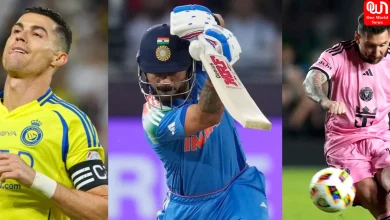Ebola- Global And Indian Perspective

Ebola- Global And Indian Perspective
The World Health Organization organised a lecture for the public to spread awareness on the recent outbreak of the Ebola Virus. Ebola came into the picture last year when many African nations struggled to cope up with a certain disease which they had no idea about. Dr. Ritu Singh Chauhan, MD, WHO, was the speaker on the day.

Dr. Ritu Singh Chauhan explaining the Ebola outburst
Dr. Chauhan began by introducing the roadmap for the lecture. She said that she would demystify the virus and introduce the audience to what happened in the world and what India is doing to be prepared.

People resist the quarantine process
She said, “This is not a new outbreak. It has been there now for over a year. Nine countries have been affected, more than twenty one thousand cases and more than eight thousand three hundred deaths. We still have a very high fatality rate.” The outbreak is very complex and unprecedented. It has brought tragedy in the life of thousands of families. The impact of Ebola on the affected African nations is not restricted to health. It has many ramifications. It affects the politics, national security, food security and social and economic setbacks. Sierra Leone has suffered 30% reduction in its economy. Many countries were coming out of civil strife and this outbreak lead to the breakdown of their economic spine.

Facts about Ebola
She then explained about the first case that could have been traced. She said that the exact source of the first case is not known but doctors have traced it to an 18 year old boy in Meliandou, Guinea. The boy had fever, black stools and vomiting on 26th December 2013 and died two days later. She further added that in its initial days Ebola was undetected and that made the situation worse. Health care centres suspected the conditions as cholera or Lassa fever. People migrated and that lead to the spread of the virus. It struck doctors and nurses in unprecedented numbers wiping out a public-health infrastructure that was already weak.

Ebola Outbreaks in Africa
She then traced the history of Ebola. It is not totally new to the world. The first outbreak of Ebola was in the year of 1976 and happened in Sudan and the Democratic Republic of Congo. The latter was in a village situated near the Ebola River, from which the disease takes its name. Up until December 2013 there were 23 outbreaks with 2388 cases and 1590 fatalities. The current outbreak was identified as Ebola in March 2014. Until March it went undetected and continued to spread to the neighbouring countries.

Ebola Mock Drills
Ebola is a rare and deadly disease caused by infection with one of the Ebola virus strains i.e. Zaire, Sudan, Bundibugyo or Tai Forest Virus. The fatality rate in the case of Ebola could go up to 90%. It is a Zoonotic infection, i.e. humans are infected by animals- chimpanzee, gorillas, fruit bats etc. found in tropical forests. Fruit bats are considered the likely hosts of the virus based on the current evidence. It can only be transmitted through person to person or contact with environments contaminated with infectious fluids such as soiled clothing, bed linen or used needles etcetera. It has an incubation period of 21 days. The symptoms are very similar to any other disease like fever, intense weakness, muscles pain, headache and sore throat followed by vomiting, diarrhoea, rash, liver infection, internal and external bleeding. It has no licensed medicine.
Ebola was declared a Public Health Emergency of International Concern by DG WHO on 8th August 2014, under the International Health Regulations 2005.







